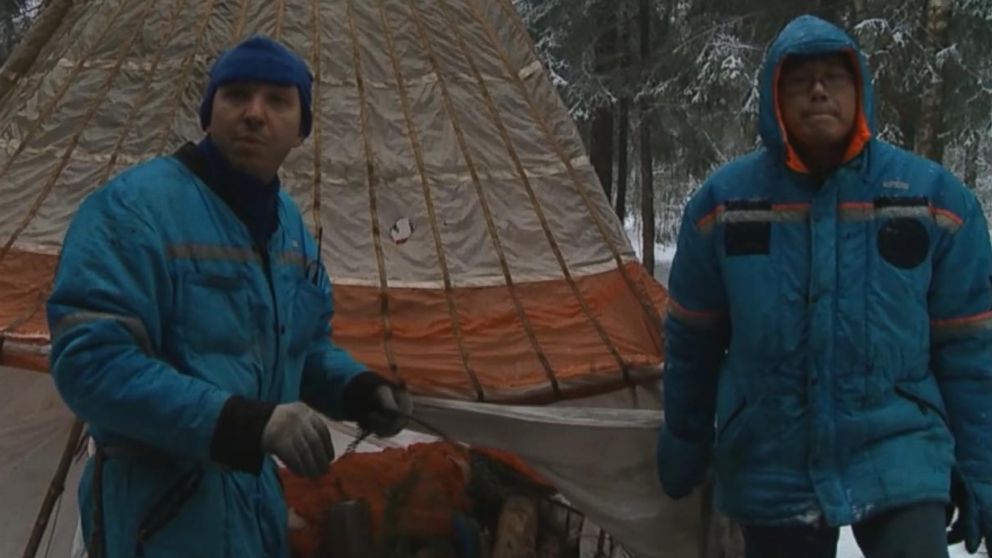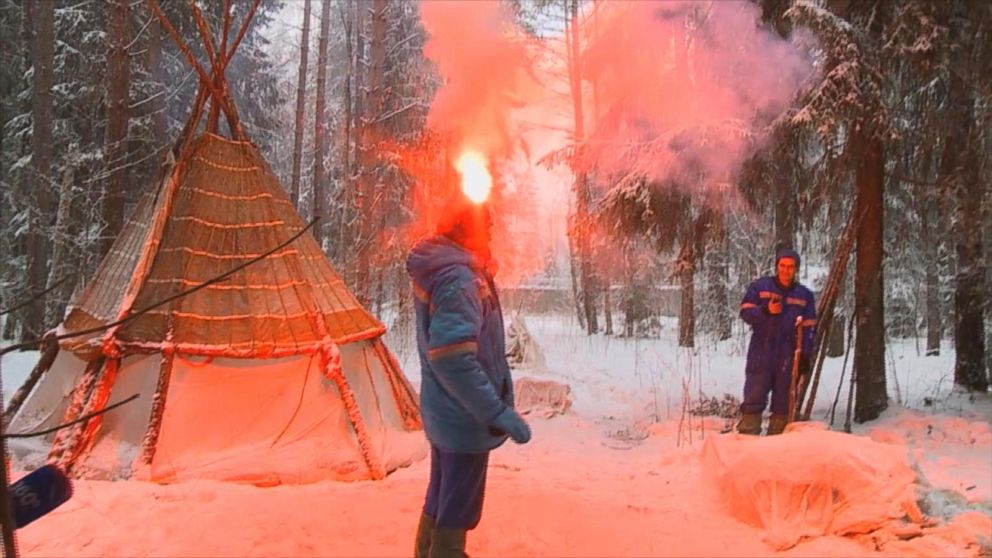NASA Astronaut Braves Russian Winter for Crash Landing Training
Randolf Breznik is heading to the ISS in 2017.
—STAR CITY, Russia -- A U.S. astronaut has spent two nights braving the Russian snows with his crew at a space center outside Moscow, simulating what to do in the event of a crash-landing in a remote winter environment.
The simulation was meant to prepare NASA astronaut Randolf Breznik, along with Russian cosmonaut Sergei Ryazanskii and Norishige Kanai of Japan, to survive freezing conditions if their return flight to Earth were to go off course and rescuers were unable to reach them quickly. The men are scheduled for a mission aboard the International Space Station ISS in 2017, with Breznik in command.
On the second day of the exercise, the three astronauts were inside a teepee tent made from the parachutes of their landing capsule, which lay 50 meters away, slowly being covered by heavy snow.
The astronauts had built the shelter themselves, sleeping under the open air on the first night, lying on the ground despite a foot of snow and temperatures hovering around 30 degrees Fahrenheit. The men wear thermal suits and fleeces, spreading pine branches beneath themselves to keep dry and space blankets around the teepee's walls to keep the heat in.
Breznik, despite being a California native, said he wished it were colder, so it would have been less wet.
“I would have much preferred it if it was minus 20. This is wet and we would have preferred a lot colder,” said Breznik, who joined NASA in 2004 after serving as a Navy test pilot.

The exercise took place in the woods around Star City, a Soviet-era space training facility just outside Moscow, where some of the first cosmonauts were trained. The state facility still operates, providing pre-flight training for astronauts from around the world, including the United States.
Space exploration is one of the few areas where the Russian and the U.S. governments still cooperate since the Ukraine crisis sent relations towards Cold War levels of mistrust. Government sanctions, as well as informal disapproval from officials, has sharply curtailed scientific collaboration between the two countries. A number of U.S. physicists, for instance, have said they have been discouraged from travelling to conferences in Russia, while their Russian counterparts have stopped receiving invites to science events in the United States.

Space, however, has largely remained immune to political pressures, though not totally. The minister for Russia’s space industry recently pointedly reminded reporters that the Russian section of the International Space Station is capable of separating from the rest of the craft at any time and can function autonomously, without the other foreign crews.
But such comments pass largely unnoticed by those involved in servicing the station. Since the space shuttle was retired, Russia’s Soyuz spacecraft have become the only regular link to the ISS, making cooperation routine.
“It’s nice not to have to think about those things,” Breznik said. “That’s the neat thing about the ISS. Because it shows what we can do no matter what’s going on on Earth.”



